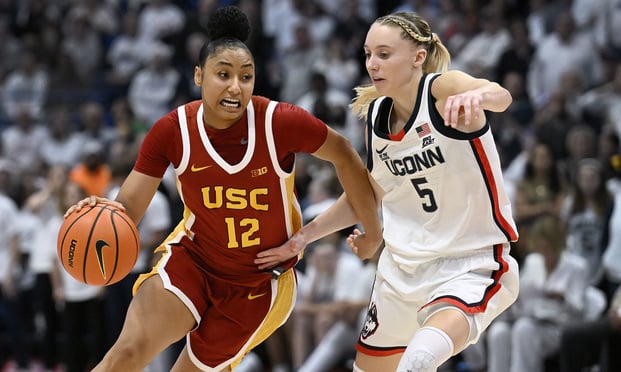Terrorism, Drug Costs Put Heat On WC Carriers
After a string of bad years, the workers' compensation insurance system seems ready to move into the black, but making profits in the face of a heightened terrorism risk and soaring prescription drug costs will be a tricky business, according to industry professionals.
As the market now stands, “it can only get better,” said Ron Retterath, an actuary for the National Council on Compensation Insurance in Boca Raton, Fla.
NCCI data shows that the calendar year combined ratio of claims and expenses against premium dollars for 2001 “will turn out to be the worst year ever” for workers comp, Mr. Retterath said. He explained that the period encompasses 90 years, going back to 1911 when the workers comp system was created.
NCCI, using A. M. Best Company data, said the 2001 calendar year combined ratio was 129, up from 118 the year before. The 2001 accident year ratio was put at 133, with a question mark attached.
An accident year looks at a years revenues against its estimated total costs–both paid and reserved-for accidents in that year. NCCI said that Sept. 11 losses would account for eight points of the uncertain 133 figure. In 2000, the accident year ratio was also 133–a seven point decline from 1999.
Meanwhile, the rising volume of painkilling and other medications prescribed for injured workers, along with soaring costs for these drugs, are sending workers' comp costs skyrocketing, posing another loss control challenge for carriers, a study by The Hartford Financial Services Group has found (see related story on page 11).
Joseph Gilles, recently promoted to president and chief operating officer at Liberty Mutual subsidiary Wassau Insurance, gave his view of the market during an interview while still serving as Liberty's executive vice president for commercial markets. He said the workers comp insurance giant has a positive attitude toward the business because, “we believe we know how to do it,” and Liberty is “optimistic about our capabilities.”
In the short-term he foresees several companies doing well, while “some companies will struggle.”
Mr. Gilles outlined Liberty's strategy, based on the premise that no one knows how Congress will ultimately react to calls for a federal reinsurance backstop for terrorism losses.
In the post Sept. 11 climate, he said Liberty has been able to function using some unexpired reinsurance coverage that had been purchased before the attacks, and some “that I paid a lot for.”
The strategy, he said, is to avoid some customers, buy expensive reinsurance, and structure rating plans carefully.
Mr. Gilles said that Liberty is avoiding customers who have too many employees in one place. He noted that some states have death benefits in the $2 million-to-$3 million range. Had the World Trade Center toll been 10,000 instead of 3,000, “just think of the dollars,” he remarked.
In California, where the company perceives the legal system to be out of control and the benefit system unsound, “were going to maintain a low profile,” Mr. Gilles said.
Nationwide, he said his company is concerned by the increasing number of litigated claims, the uncertain nature of the economy and double-digit medical inflation. To handle its costs, Liberty Mutual is increasing prices 15-to-20 percent for middle-market customers and 20 percent for large employers with $500,000 deductibles.
On the positive side, he noted accident frequency through last year had not stopped declining. He attributed that to automation and the nations shift away from manufacturing to a service economy.
Mr. Gilles said he expects frequency will stay low because “in America, people worry about employees,” and risk prevention activity gets a little better every year.
Vince Donnelly, president and chief operating officer of PMA Insurance Group in Blue Bell, Pa., agreed that for the industry, “while there have been a lot of negatives, one thing thats been positive is that frequency of comp claims has been down.”
Mr. Donnelly said underwriting discipline in the industry is beginning to take shape even as it is impacted by healthcare cost pressures and a negative economy, which he said can lengthen the duration of claims.
In a climate of increased terrorism risk and reinsurance scarcity, he said the strategy is to carefully write each employer–not just obtaining the number of workers in various risk categories, but asking how many employees are at one location at the same time, and “what else is around that has potential exposure to the terrorism threat?”
Mr. Donnelly said he thinks that workers comp premium increases have generally been in the 15-to-20 percent price range. While not exactly bullish, he said of the workers' comp market, “barring a catastrophic event in 2002, we should see improvement.”
Keith Bateman, vice president and director of workers comp and health for the Alliance of American Insurers in Downers Grove, Ill., said whether accident frequency remains level or decreases is the key to a good combined ratio. However, he cautions, “it may be two or three years before things start turning around.”
Mr. Bateman said there is a concern about reaction in state legislatures to rising workers comp insurance prices for employers. “Will they go back in and change loss-cost and competitive rating laws to get more regulatory control over insurer pricing changes?” he wondered.
Mr. Bateman also took note of the exposure that insurers have through their participation in state guaranty funds, and he suggested that even if a carrier avoids terrorism risks in big coastal cities, “we dont know if the next attack wont hit a group out in Main Street America.”
He said there are reports circulating in the industry of companies having difficulty collecting on their reinsurance claims, and he believes that there will be additional insolvencies in the workers comp sector.
“You cant conclude in a hard market there wont be failures,” he cautioned. Mr. Bateman noted that NCCI estimates that the industry is under-reserved by $20 billion, and advised that “if theres a terrorism attack, all bets are off.”
Even as the market hardens, he pointed out, medical and indemnity costs for workers comp are increasing.
Ken Martino, senior vice president of Specialty Risk Services, a subsidiary of The Hartford, said that while the current loss-cost situation is a bad one, the industry will survive it.
“I lived through the 1980s, when things were so bad they used terms like apocalypse. We will get through this. Its always been a resilient market that met the challenges,” he said.
Reproduced from National Underwriter Property & Casualty/Risk & Benefits Management Edition, May 6, 2002. Copyright 2002 by The National Underwriter Company in the serial publication. All rights reserved.Copyright in this article as an independent work may be held by the author.
Want to continue reading?
Become a Free PropertyCasualty360 Digital Reader
Your access to unlimited PropertyCasualty360 content isn’t changing.
Once you are an ALM digital member, you’ll receive:
- Breaking insurance news and analysis, on-site and via our newsletters and custom alerts
- Weekly Insurance Speak podcast featuring exclusive interviews with industry leaders
- Educational webcasts, white papers, and ebooks from industry thought leaders
- Critical converage of the employee benefits and financial advisory markets on our other ALM sites, BenefitsPRO and ThinkAdvisor
Already have an account? Sign In Now
© 2024 ALM Global, LLC, All Rights Reserved. Request academic re-use from www.copyright.com. All other uses, submit a request to [email protected]. For more information visit Asset & Logo Licensing.








